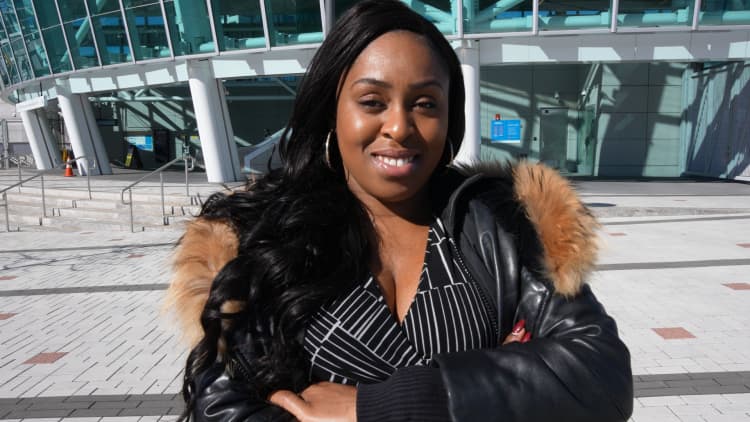President Joe Biden and his administration are clearing $1.2 billion in student debt balances for 153,000 borrowers.
Borrowers on the Saving on a Valuable Education income-driven repayment plan who originally took out $12,000 or less in loans at least 10 years ago have started being notified that their debt is forgiven, the administration announced Wednesday.
“I hope this relief gives you a little more breathing room,” the email from President Biden to qualifying borrowers reads. “I’ve heard from countless people who have told me that relieving the burden of their student loan debt will allow them to support themselves and their families, buy their first home, start a small business, and move forward with life plans they’ve put on hold.”
The SAVE plan rolled out in summer 2023, with the administration touting it as the “most affordable” repayment plan available to borrowers.
The opportunity for low-balance borrowers to have their loans forgiven after 10 years of payments was initially slated to go into effect this upcoming summer, but the administration announced in January it would move that timeline up.
Now, qualifying borrowers have started receiving emails notifying them their loans have been forgiven. “Congratulations—all or a portion of your federal student loans will be forgiven because you qualify for early loan forgiveness under my Administration’s SAVE Plan,” the emails read.
Those affected do not need to take any additional steps to receive relief, the administration says. Next week, the Department of Education will begin contacting borrowers whose loans are eligible for forgiveness, but who have not enrolled in the SAVE plan yet.
All borrowers on the SAVE plan are eligible to have their remaining balances forgiven after 20 years of repayment for undergraduate borrowers or 25 years for those with graduate school loans, regardless of how much they initially borrowed.
Those who borrowed $12,000 or less only need to make payments for 10 years before becoming eligible for forgiveness on the SAVE plan, or an additional year for every $1,000 borrowed above $12,000. That means anyone who took out $21,000 or less in undergraduate loans can have their debt forgiven on a shorter timeline than the standard 20-year term.
Why low-balance borrowers may need relief the most
While it may seem like those with smaller initial student loan balances should have an easier time paying them off, Education Secretary Miguel Cardona highlights the fact that many of those borrowers wind up with small loan balances because they don’t finish college, and therefore tend to earn less than their degree-holding peers.
As a result, 21% of borrowers with less than $15,000 of outstanding student debt were behind on their payments, compared with 17% of borrowers with higher balances, according to a 2020 Fed survey.
“We recognize that for those who take out smaller loans, a lot of those folks are the ones that end up without a degree and with debt that they can’t handle and they’re low-income earners,” Cardona told CNBC Make It in January. “This is a subgroup that’s really negatively impacted by the current system.”
What’s more, borrowers who met forgiveness eligibility requirements before January 2024 but still made loan payments that month or later can have those payments refunded, according to the Federal Student Aid website.
“This means that, for example, if we determine that your forgiveness date is in February 2024, then any payments you made during or after March 2024 will be refunded to you,” FSA says. “However, if we determine that your date of forgiveness is in July 2023, then only payments made during or after January 2024 will be refunded to you.”
The forgiveness comes at a time when student loan borrowers are facing critical decisions like how to balance their student loan payments with saving for retirement. Though more relief is on the way for borrowers on the SAVE plan — including even lower monthly payments later this summer — debt forgiveness advocates are celebrating this recent round of cancellation.
“Student debt cancellation results in freedom from a financial burden that has weighed thousands of borrowers down,” Natalia Abrams, president of the Student Debt Crisis Center, said in a statement. “This is more proof that student debt cancellation is the path forward to achieve an affordable higher education system in this country again.”
Want to land your dream job in 2024? Take CNBC’s new online course How to Ace Your Job Interview to learn what hiring managers are really looking for, body language techniques, what to say and not to say, and the best way to talk about pay.
Credit: Source link




